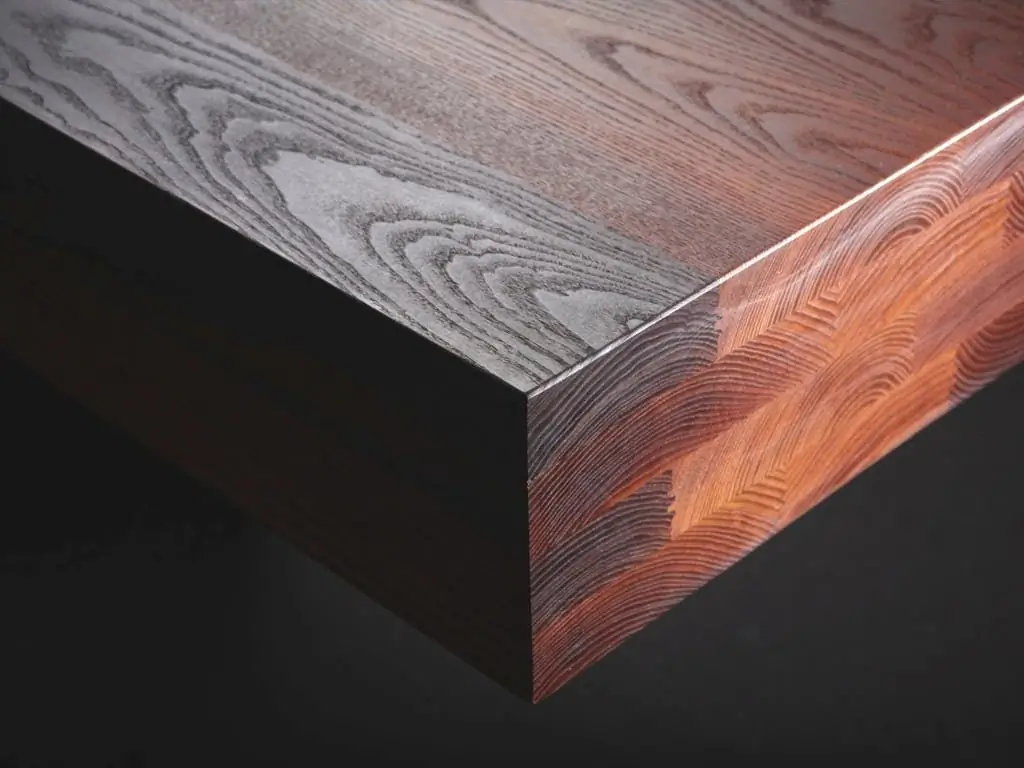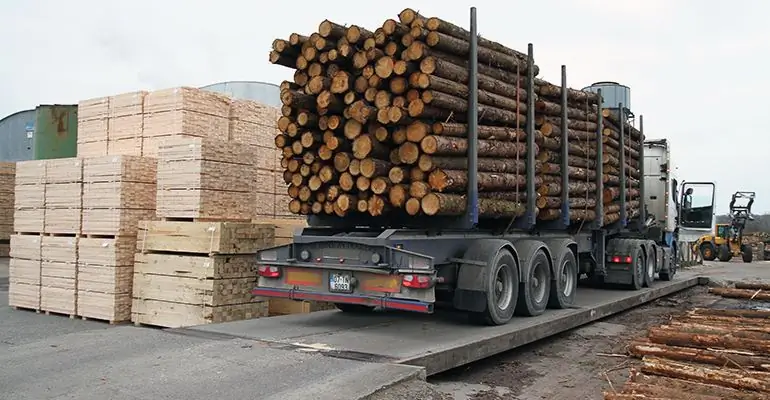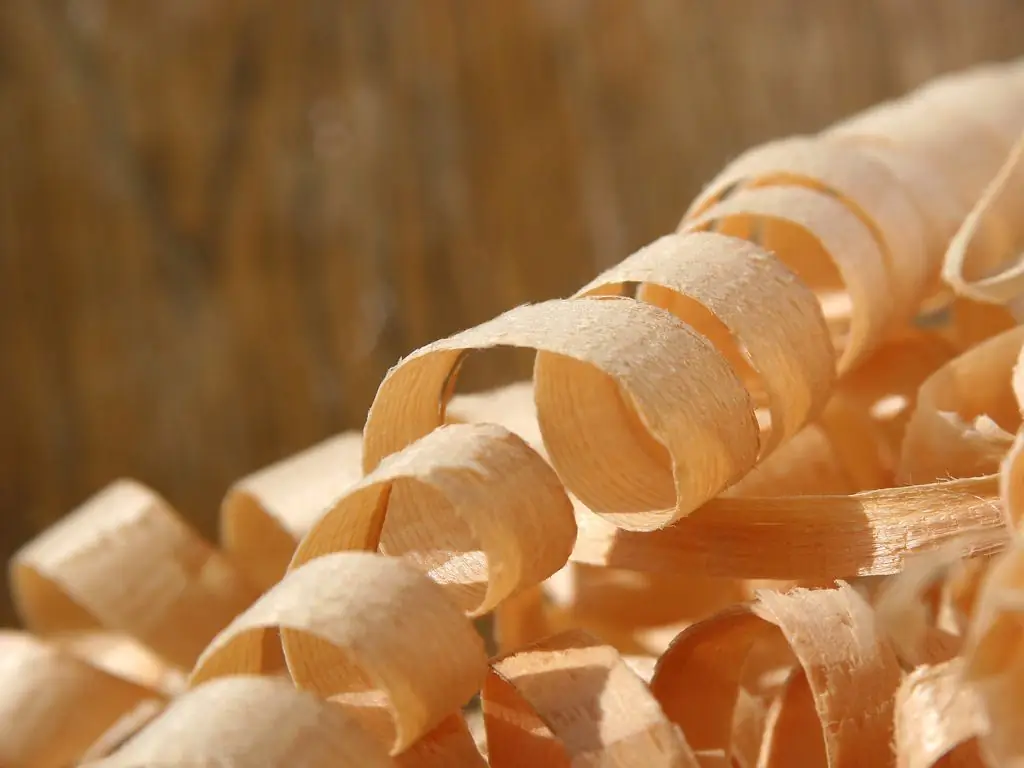2025 Author: Howard Calhoun | [email protected]. Last modified: 2025-01-24 13:10:34
Schips are called particles made by grinding wood raw materials. Both large specialized enterprises and small private workshops are engaged in the production of this material. The cost of wood chips is low, which determines the feasibility of its use primarily as an alternative fuel. Wood chips can also be used in other areas of the national economy.
Use area
Wood chips are used mainly in domestic (and sometimes industrial) boiler houses. The use of this type of alternative fuel is considered the most economically justified in the settlements of remote forest regions of the Urals, Siberia and the European part of Russia. In particular, where timber harvesting is widely carried out. Boilers for wood chips are structurally practically no different from equipment that uses coal. And therefore, the transition to heating with this type of fuel does not cause any special costs. All you need to do in this case is to install a special feed line.

Wood chips usedit can also be used in the production of furniture, as a decorative element in the arrangement of parks and gardens, in the smoking of products, the manufacture of arbolite blocks, etc. However, its main purpose is still heating domestic and industrial premises.
General Description
Wood chips, the use of which is most appropriate as a fuel, has both its advantages and disadvantages. The advantages of this material can be attributed in the first place:
- low production cost;
- sufficient amount of raw materials used in the manufacture;
- relatively low ash content;
- year-round production capability.
The disadvantages of wood chips as a fuel material are:
- not too high energy value;
- low density material;
- high humidity, and therefore the need for drying;
- rot resistance;
- difficulties in storage due to spontaneous combustion.

Production equipment
Wood chips are produced either on special machines or using modern combines. The first type of equipment is usually used by small production workshops. Combine harvesters produce wood chips directly at logging sites and in much larger quantities. Such equipment is purchased by large specialized companies.
For the production of chips, threshing or chipping machines can be used. The latter are used more often. Threshing equipment is more suitable for the production of fuel pellets and fine wood fraction for briquettes.
Chippers can be used for the production of both fuel and technological (intended for the manufacture of chipboard or composite) chips. In turn, the latter are divided into screw, disk and drum. The first two varieties are usually used for processing whole trunks and long material. Drum machines are more suitable for the production of chips from heterogeneous wood (cutting residues). Chippers can operate from their own engine or from the power take-off of a truck or tractor.

In addition to the actual chippers, today entire complexes are produced, supplemented by supply lines, receiving hoppers, and sometimes dryers. The production of decorative wood chips also involves the use of special equipment designed for coloring.
Combines
This modern technique can perform the following operations:
- felling thin-stemmed (and sometimes regular) timber;
- feed it into the chop hole;
- quick chipping;
- feeding the latter into the receiving container along the scraper conveyor.
Types of material
There are types of alternative fuels like wood chipsseveral. The most popular is the so-called stem chips. Its advantages include, first of all, a small content of bark, high energy value, low ash content.
Less valuable is wood chips made from woodworking and timber processing waste, as well as logging residues.

Cost
The price of this material depends both on its purpose and variety, and on what kind of wood was used in the manufacture. The cost of fuel chips may depend on the ash content, percentage of bark content, particle size, etc. The price for this type of material usually ranges from 300-700 rubles. per cubic meter. Decorative wood chips are much more expensive. The price of this material is 200-400 rubles per bag. The cost is even higher for wood chips intended for smoking sausages, bacon, etc. Apple, pear, alder, cherry, etc. material can be purchased for 100-400 rubles per kilogram.
Recommended:
Heat-treated wood: main characteristics, production technology, pros and cons

Almost every one of us has come across such a concept as heat-treated wood. However, few have thought about what it really means. Meanwhile, this material can be considered innovative. Due to the high temperature - from +150 °C to +250 °C - the material is strong and durable
Wood processing technology and production of wood products

Wood is an unusual and especially valuable material. For all its familiarity, it has an amazing set of technical and physical properties that a person cannot repeat with the help of synthetic substitutes. This is due to the extensive use of blanks made of natural wood in a variety of industries. Modern wood processing technologies and the production of wood products in general make it possible to provide people with furniture, building materials, decorations, utensils, etc
Production of olive oil and the cause of bitterness. Wood oil - what is it?

The European olive is an amazing tree with a lifespan of about 500 years! Moreover, its oils are endowed with a healing and simply beneficial effect. European olive oil is applicable in medicine. Often they relieve the symptoms of burns. In cosmetology, olive oil is used as a rejuvenating product of natural origin. We will also answer the question: wood oil - what is it?
Beech density. Features, application and technological properties of wood

Beech is one of the most common tree species found in mixed and deciduous forests across much of Europe. It is widely used in the manufacture of furniture. Its wood has great strength, toughness and inelasticity. The density of beech, which will be discussed in the article, depends on the cellular structure and humidity
Wood shavings: types, production technology and application features

Wood shavings as an industrial, packaging and decorative material. Types and characteristics of chips, differences from chips and sawdust. Application in the country, in animal husbandry, in construction, as a heater, decorative element and filler when packing gifts and fragile items

